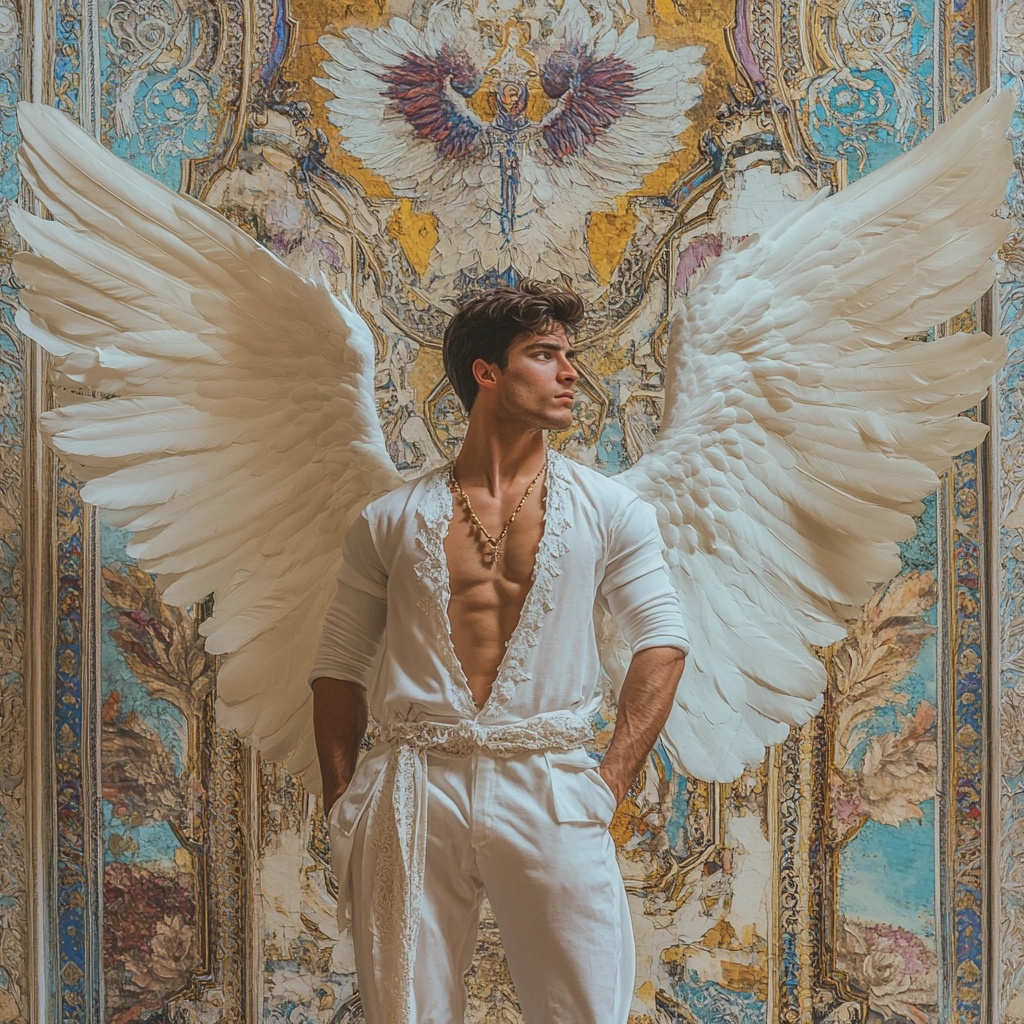He stands where heaven’s colors fade,
A god remade from light and blade.
Feathers burn in borrowed grace,
A sinner carved from angel’s face.
Chains of gold, a holy lie,
Drip like blood from sanctified sky.
Once he sang of love divine,
Now his gospel tastes like wine.
Every breath, an unspoken creed,
Every scar, a sacred seed.
He fell, not lost, but crowned in flame,
For mercy wears another name.
He is the fallen, fierce and free,
A myth reborn in majesty.
Where wings unfold, the heavens break,
And truth is all the gods forsake.
Beneath his gaze, the saints confess,
The beauty born of brokenness.
For even ruin learns to rise,
A halo forged from severed ties.
He is the dawn, he is the sin,
The war that rages deep within.
No prayer can cage what he became,
A fallen star who kept his name.

There’s something magnetic about the idea of a fallen angel.
Not the damned, not the villain, but the one who chose to fall.
That’s the energy that pulses through this image: divine rebellion, sensual power, and the quiet ache of someone who once belonged to light but now rules his own fire.
The man in white doesn’t look like he lost heaven—he looks like he outgrew it. His wings, pristine and unashamed, stretch against a backdrop of faded divinity. It’s the kind of beauty that doesn’t beg for redemption. It demands reverence.
When I wrote “The Fallen,” I wanted to capture that tension between purity and passion, the sacred and the profane. The poem walks that edge: part hymn, part confession, part love letter to defiance. It’s about claiming the parts of yourself that others call ruin and turning them into radiance.
This piece isn’t about loss, it’s about evolution. About the art of becoming your own divinity when the heavens turn away.
Because sometimes, the most angelic thing you can do…
is fall on your own terms.



